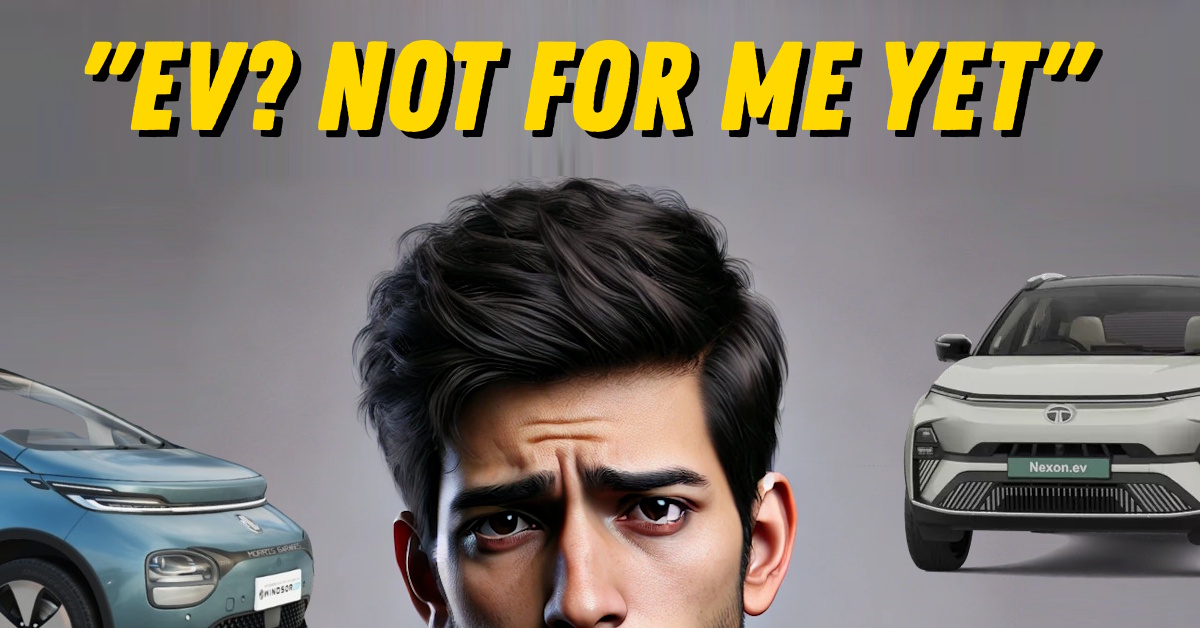I Wouldn’t Buy an EV Unless These 4 Things are Fixed (And No, I’m Not Talking About Range)


So, you’re expecting another article about how EVs need more range before they make sense? Not this time. Honestly, I think most modern electric vehicles (EVs) have plenty of range for daily driving. But that doesn’t mean I’m rushing to buy one. In fact, there are four key issues that keep me from making the switch—none of which have to do with how far an EV can go on a full charge.
Call me picky, but if I’m spending lakhs of rupees on a car, I want to be comfortable in it. I recently sat in both a Tata Nexon EV and an MG ZS EV, and neither felt particularly cozy. The seat height was too low for my liking [I am 5”9’], making it a bit of a struggle to get in and out. Besides, one sits knees up—okay for short rides but very painful for long Noida-Lucknow travel I do frequently. I know EVs have to make room for those big battery packs under the floor, but surely, manufacturers can find a way to offer better ergonomics?
For people with mobility issues or those who just prefer a higher seating position, this is a real concern. Until EV makers figure out a way to make seat height more adjustable across different models, I’ll be sticking with my petrol car.
Charging at home is one of the biggest perks of owning an EV—at least, that’s what I hear from homeowners with garages. But what about the rest of us? If you live in an apartment or an older building without dedicated EV charging infrastructure, plugging in overnight isn’t an option.
Sure, public fast chargers exist, but they’re not as convenient as having a home setup. Running an extension cord from my third-floor apartment down to the street isn’t exactly a viable solution. And while some buildings are starting to add EV chargers, progress is slow, and retrofitting older properties isn’t cheap.
For EV adoption to truly take off, we need solutions that make home charging just as easy for apartment dwellers as it is for people with garages. Maybe that means more on-street charging stations, government incentives for housing societies, or better workplace charging options. Whatever it is, it needs to happen before I consider making the switch.
Ask any potential EV buyer about their biggest concerns, and you’ll probably hear something about battery life. While automakers love to tout impressive warranties—usually 8 years or 1.6 lakh km—that doesn’t tell me how much battery degradation I can expect over time.
Will I be stuck with only 70% of my original range after five years? Will replacing a worn-out battery cost me as much as buying a new car? These aren’t small worries. Petrol cars may require engine repairs down the line, but at least I have a rough idea of how long they’ll last.
More real-world data on battery health and long-term performance would go a long way in easing these concerns. And no, I’m not talking about manufacturer claims—I want independent, verifiable studies that show what happens after 1.6 lakh km of daily use.
Buying a car is one thing, but what about selling it down the line? Right now, resale values for EVs are all over the place. Some models, like Tata and MG, seem to hold their value pretty well. Others? Not so much. The uncertainty around depreciation makes it tough to commit to an EV, especially when we still don’t know how well older models will age compared to petrol cars.
Part of the issue is the rapid pace of EV innovation. A brand-new EV today might feel outdated in just a few years, much like an old smartphone. Plus, if battery replacement costs remain high, used EV buyers might shy away from older models altogether.
Until there’s more predictability in the resale market, I’d rather stick with a traditional car that I know won’t lose half its value overnight.
EVs are the future—there’s no doubt about that. But for me, and probably many other hesitant buyers, range isn’t the issue. The real challenges lie in comfort, convenience, long-term reliability, and financial certainty. Fix those, and I might just consider making the switch.
Until then, I’ll keep waiting.